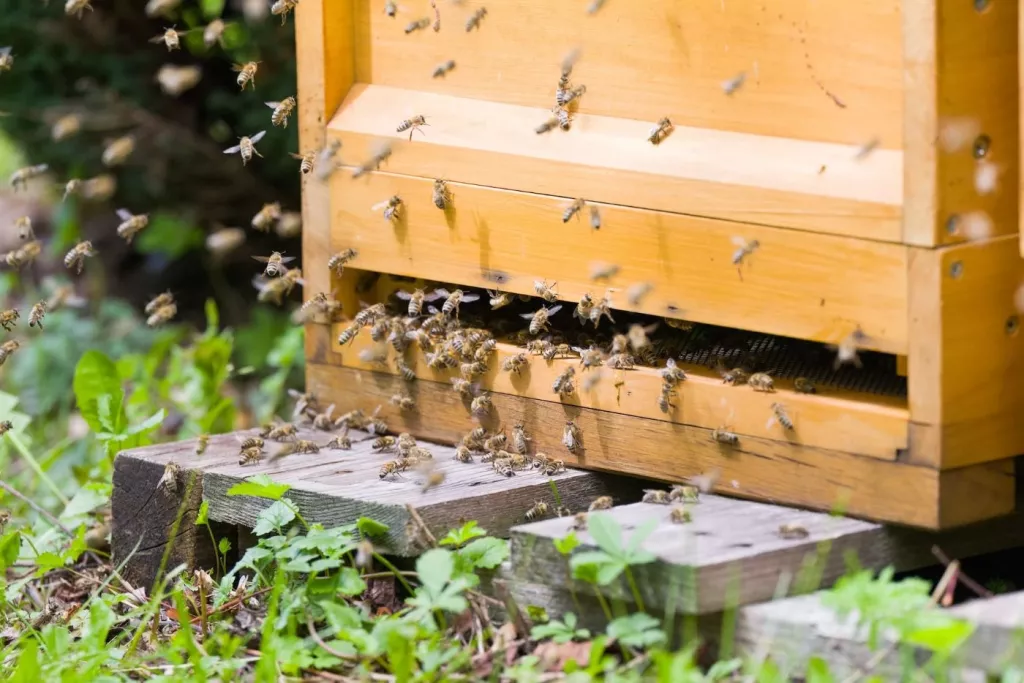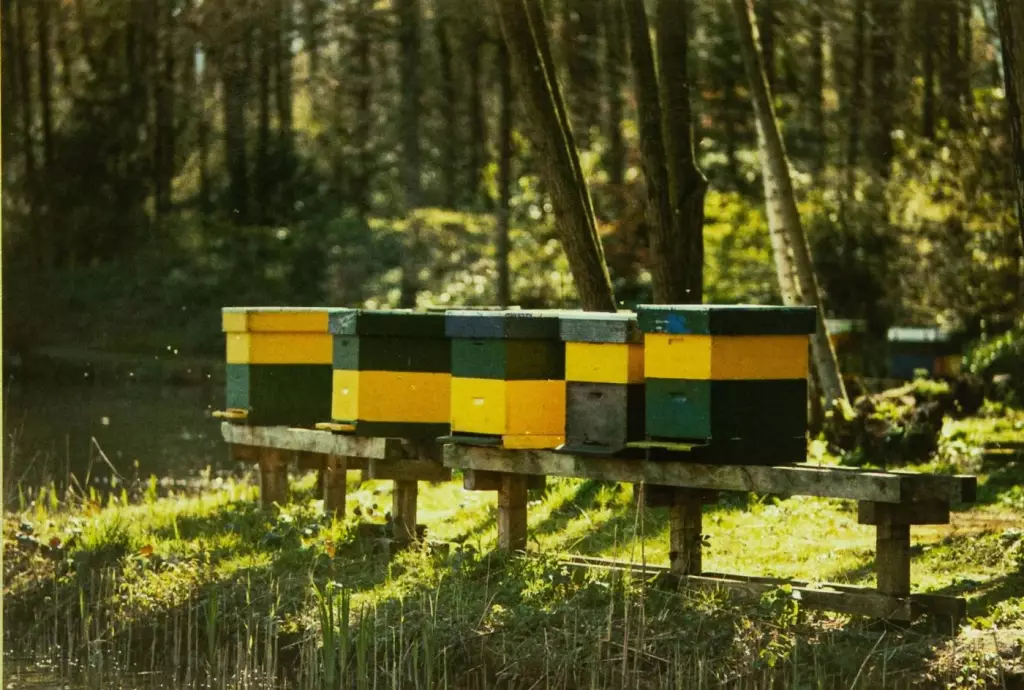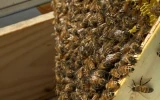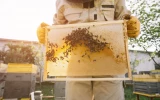How To Ventilate a Beehive - And What To Avoid
If you're a beekeeper, you know the value of maintaining a proper ventilation system in your beehive. Good ventilation helps to regulate temperature and humidity and also helps to reduce the risk of disease inside the hive. In this guide, I will explain exactly how to ventilate your beehive and what to avoid when doing so.
You can ventilate a beehive using a screened bottom board, a quilt box, or an inner cover with holes; or you can create an upper entrance, or provide shade to the hive. You can also use entrance reducers or fans. When providing ventilation, avoid using any chemicals or causing any disturbance to the entire colony.
Below, you will learn different methods on how you can provide ventilation to your beehives, as well as what you must avoid when you do these techniques.
Summary
- You can ventilate your beehive using natural ventilation techniques such as the use of a screened bottom board, a quilt box, or an inner cover with holes. Alternatively, you can create an upper entrance or provide shade to the hive to allow good airflow.
- You can also use mechanical ventilation such as installing fans and using entrance reducers.
- Avoid using chemicals at all costs that will disorient the colony. At the same time, refrain from disturbing the bees to prevent them from abandoning the hive.

Methods of Providing Ventilation to a Beehive
The need for proper ventilation in a beehive cannot be overstated. It affects the health and productivity of the colony.
Without adequate airflow, your bees can become stressed especially during extremely hot seasons. This might affect their honey production and bring losses to your business as well. In this section, we will cover two methods of ventilating a beehive: natural ventilation and mechanical ventilation.
Providing natural ventilation for beehives
Natural ventilation relies on the natural movement of air to keep your hive well-ventilated. The following methods can help you achieve this:
- Screened Bottom Board: A screened bottom board allows air to flow through the bottom of the hive, promoting natural ventilation. It also helps to reduce humidity buildup in the hive.
It is a much better option compared to solid bottom boards despite its price, for it improves the overall health of the hive and reduces the amount of cleaning and maintenance needed.
- Quilt Box: A quilt box is a layer of insulation placed on top of the hive to absorb excess moisture and regulate temperature. It also allows for natural ventilation through the top of the hive. It can be made even with materials already available in your home.
- Inner Covers: Inner covers with ventilation holes can help to promote airflow through the hive.
- Upper Entrances: Upper entrances provide an additional way for air to circulate through the hive. They also help to reduce congestion at the hive entrance.
Most beekeepers have been resorting to making an upper entrance beehive because it benefits the colony in a number of ways. To know more about beehive entrance sizes, locations, and other variations, you can read this article.
- Shade: Perhaps you can help to regulate temperature and reduce the need for mechanical ventilation if you provide enough shade for your hive or place it in a location that receives enough shade.
Providing good beehive airflow through mechanical ventilation
Mechanical ventilation uses fans or other equipment to actively circulate air through the hive. The following methods can help you achieve this:
- Entrance Reducer: An entrance reducer can be used to create a smaller entrance for the hive, which can help to increase the effectiveness of mechanical ventilation. It also prevents drafts from entering the hive and disturbing the bees.
By reducing the entrance size, the bees can more easily regulate the temperature and humidity inside the hive, which can help to maintain a healthy environment for the colony. You can read this article on When To Use or Remove a Beehive Entrance Reducer to know how to install an entrance reducer.
- Fans: Fans can be used to actively circulate air through the hive. They are particularly useful in hot and humid climates.
- Ventilation Holes: Ventilation holes can be added to the hive to increase airflow. However, it is important to avoid creating too many holes, as this can disrupt the bees' natural ventilation system.

Precautions When Ventilating a Beehive
1. Avoid using smoke or any other chemical products
You may want to abandon the use of smoke and chemicals when ventilating a beehive because they can cause stress and disorientation to the bees, and may even kill them. The smoke can also reduce the amount of oxygen in the hive, and the chemicals may contaminate the honey and wax.
2. Avoid using strong air currents
Strong air currents can disturb the bees and can interfere with their hive activities and negatively affect their honey production. Additionally, strong air currents can cause bees to become chilled, which can ultimately lead to death. When selecting a fan, you might want to choose one that is quiet and has a low speed.
3. Avoid using any sharp objects
Sharp objects should be avoided when ventilating a beehive as they may damage the comb and could also hurt the bees. Using sharp objects can also cause the hive to become unstable and can increase the risk of injury to both the beekeeper and the bees. Therefore, it is best to use more gentle methods such as brushing or blowing air to ventilate a beehive.
4. Avoid exposing the beehive to direct sunlight
Direct sunlight should be avoided during the ventilating process as it can cause the inside temperature of the beehive to rise too high, resulting in the death of the bees. Additionally, direct sunlight can cause the wax to melt, making it difficult for the bees to maintain a strong structure within the hive. Take note that a temperature of more than 113°F is already detrimental for bees.
5. Avoid using any type of aerosol when ventilating a beehive
Aerosols can be harmful to bees and can cause death. They can also cause the bees to become disoriented and fly away from their hive, potentially leading to them getting lost and not being able to return. Additionally, aerosols can contain toxins that can harm the bees, their brood, and the environment.

6. Avoid removing too much comb from the beehive for ventilation purposes
If you remove too much comb from a beehive during the ventilating process, it can be detrimental to the colony. It can reduce the amount of comb available for the bees to use and can also reduce the amount of honey or pollen stored in the hive.
In addition, it can cause the temperature of the hive to drop too low and make it difficult for the bees to thermoregulate. Finally, it can also cause disruption and stress to the colony which can lead to swarming or other issues.
7. Avoid removing the queen bee during the ventilating process
Removing the queen bee during the ventilating process can disrupt the hive and can lead to a decrease in the number of worker bees. The queen bee has a major role in the hive in terms of the reproduction of new worker bees.
Without the queen, the hive would struggle to keep up with the demands of the colony, leading to a decrease in honey production. Therefore, it is best to leave the queen in the hive during the ventilating process.
8. Avoid disturbing the bees at all costs
Disturbing bees during the ventilating process can lead to several issues, such as the bees becoming agitated and attacking, which can be dangerous.
Additionally, it can disrupt the bee colony and cause the bees to abandon their hive. Inadequate ventilation can also trigger bees to abandon a hive. When they do this, you will need plenty of time and money to fix it.
The goal of every beekeeper is to be successful in raising bees. Knowing full well how to ventilate your hives may be your key to success.


